 This Is Not A
BLOG!
This Is Not A
BLOG!
Date: 09/01/10
Marking The Past
I've been having a bit of a clear-out here over the last half-dozen or so weekends. I'd been aware that there was an awful lot of clutter in the house, some of it dating back to when my mother was alive, and so resolved finally to do something about it, if only to clear some space for some more clutter of my own in the future.
This sort of activity can be a dangerous one for someone like me who combines a retentive memory with a keen sense of time passing; a combination which - unless severely checked - can lead to a near-crippling melancholy which can last for days. But it had to be done.
Over the few weeks I've been doing this, I became aware once again of some of my mother's strange tendencies not only for keeping things past their usefulness (although not as bad as the old woman I heard about who kept a cardboard box full of - as the label put it - 'pieces of string too short to be of any use'), but also for getting things she already had a sufficient number or amount of. That's how I came across three complete tea services in one of the kitchen cupboards. They wouldn't have been of use to her, since she already had a couple of perfectly serviceable ones, and they're of no use to me because I never have people around to tea and I don't drink tea anyway.
Some things I've turned up date back still further to my father's day (and he's been gone twenty-one years), and there are other items where I can't fathom quite how they came into our possession in the first place.
In this last category I include a random selection of old coins. Not just old pre-decimal UK ones (including my all-time favourite, the twelve-sided thrupenny bit), but some foreign ones. I thought I'd show you a couple of them just for the sake of interest.
First off is this 1935 50 Reichspfennig piece. This was the first of its denomination to be minted in aluminium (intended as a temporary measure but which continued), and the last to be minted without a swastika in the eagle's talons. The 'J' on the reverse means that it was minted in Hamburg.
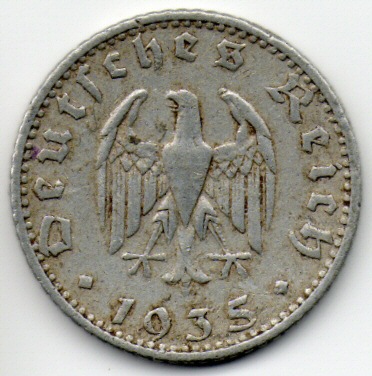
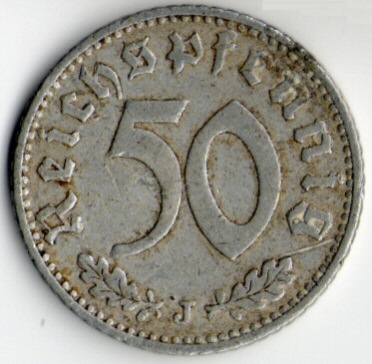
Moving on to the post-war period, the Bank deutscher Lšnder was created in 1948 in order to run the newly-introduced Deutsche Mark.
Below is a 1949 10 Pfennig piece. The 'F' on the reverse indicates that this coin, made of brass-plated steel, was minted in Stuttgart.
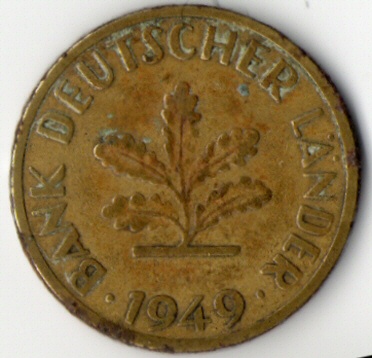
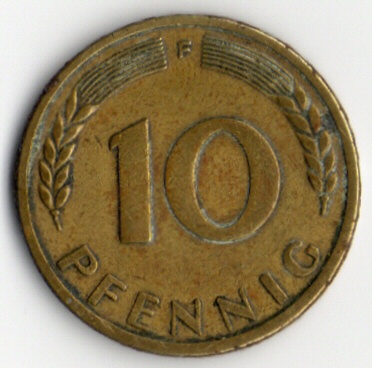
All the rest of the junk I've unearthed is mine, of course, including this piece of technological history:
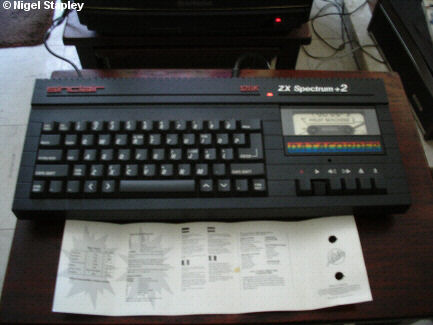
This Sinclair ZX Spectrum +2A was my first computer. I got it for Christmas in 1988, and it was thought at the time to be quite the thing, complete with a massive RAM disk of 128KB (yes, KB, not MB). I got years of use out of this, mostly playing games on it but also doing some (very) BASIC programming to create programs which would tell you what day of the week you were born on, or convert imperial and metric units, or compose little tunes.
As you can see, even after over twenty years (and not having been used for a decade or more) it still works, although the signal output socket is a bit loose on it and I can't get my old portable TV to tune in exactly on the frequency it's putting out.
I just had to give it a go this afternoon, and here's a shot of the machine loading Code Masters' Fruit Machine Simulator. It's a measure of the comparative primitiveness of the technology that such a simple program should take about five minutes to load from a cassette (real smarties interfaced a floppy drive to it), but this only heightened the anticipation.
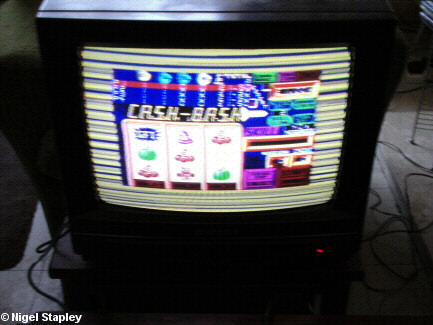
I also spent a bit of time later playing Arkanoid on it, although my skill level has fallen so far that I couldn't get past the third screen.






 This Is Not A
BLOG!
This Is Not A
BLOG!











